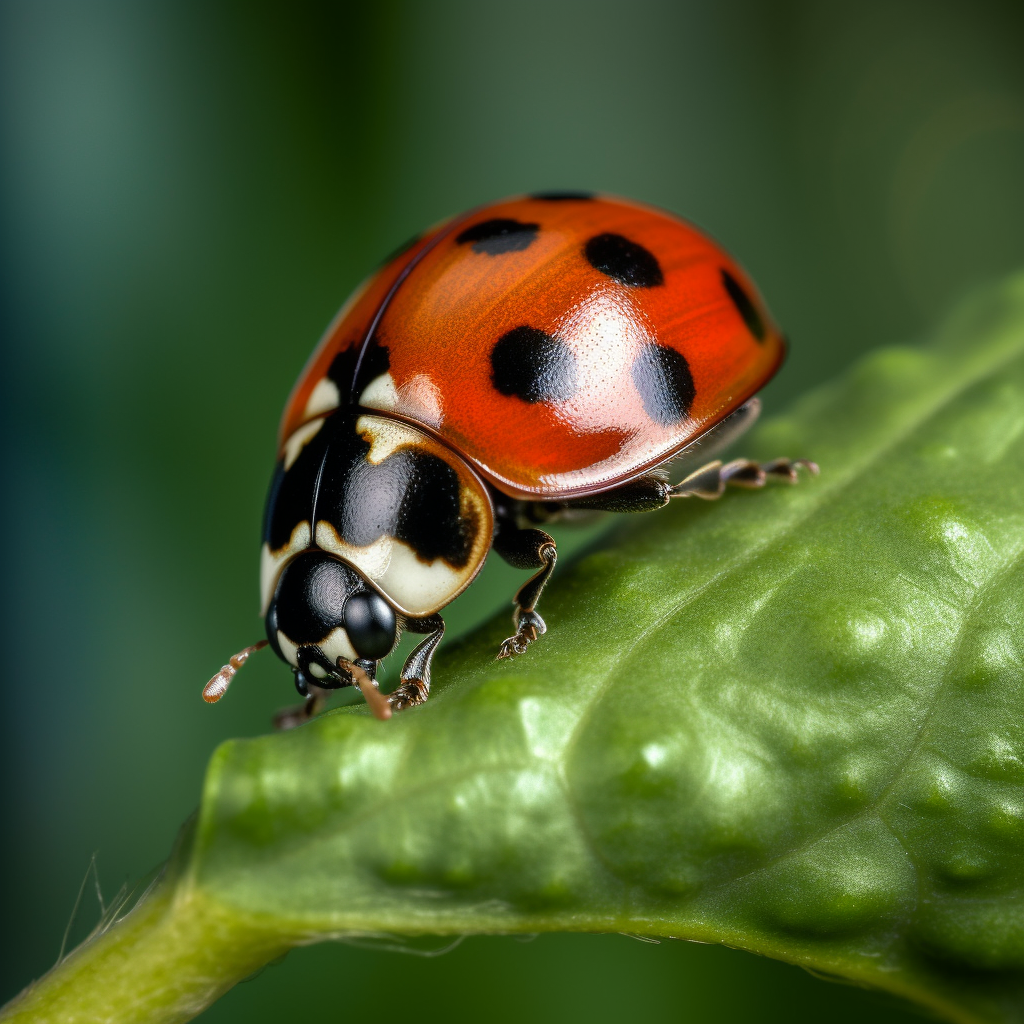Ladybugs, also known as ladybirds, are a gardener’s best friend. They are natural predators of many common garden pests, such as aphids and mites. In this comprehensive guide, you will learn how to keep ladybugs in your garden and create a natural, eco-friendly environment that benefits both your plants and these helpful insects. We will also explore some interesting facts about ladybugs, and discuss how they can protect your garden from harmful pests.
Why Ladybugs are Important for Your Garden
Contents
Ladybugs play a crucial role in maintaining the balance in your garden’s ecosystem. They are voracious eaters, with an adult ladybug capable of consuming up to 50 aphids per day! Besides aphids, ladybugs also eat other pests like ants and mites. This makes them an essential ally in keeping your garden healthy and free of harmful insects.
Ladybug Protection Mechanisms
Ladybugs have developed several strategies to protect themselves from predators. They secrete a foul-smelling liquid, which acts as a deterrent for birds and other potential predators. Additionally, their bright colors serve as a warning sign, signaling to predators that they are not a tasty snack. To learn more about how ladybugs protect themselves, visit this page.
Fun Facts About Ladybugs
Did you know that there are over 5,000 species of ladybugs worldwide? And despite their name, not all ladybugs are ladies. Both male and female ladybugs work together to protect your garden. For more fun facts about ladybugs, check out our dedicated page.
Attracting Ladybugs to Your Garden
Now that we understand the importance of ladybugs in our gardens, let’s explore how to attract and keep them around.
Step 1: Plant Ladybug-Friendly Plants
Certain plants are known to attract ladybugs to your garden. These include:
- Marigolds
- Dill
- Fennel
- Yarrow
- Cosmos
- Calendula
- Angelica
By planting these flowers and herbs, you’ll create a welcoming environment for ladybugs, and they’ll be more likely to make your garden their home.
Step 2: Provide a Water Source
Ladybugs need water to survive, so it’s essential to provide a water source for them in your garden. A shallow dish filled with water, pebbles, or marbles will allow them to drink without the risk of drowning.
Step 3: Avoid Chemical Pesticides
Using chemical pesticides in your garden can harm ladybugs and other beneficial insects. Instead, opt for organic pest control methods, such as introducing natural predators like lacewings or encouraging birds to visit your garden.
Step 4: Create Shelter
Ladybugs need shelter to hide from predators and lay their eggs. You can provide this by creating ladybug houses or leaving piles of leaves, twigs, or stones in your garden. Additionally, consider planting dense shrubs or ground cover plants, which can offer protection and hiding spots.
Keeping Ladybugs in Your Garden
Once you’ve attracted ladybugs to your garden, you’ll want to ensure they stay and continue to benefit your plants. Here are some tips to help you achieve that:
Tip 1: Provide a Steady Food Supply
To keep ladybugs in your garden, ensure they have a constant food supply. This means maintaining a healthy population of aphids and other pests for them to feed on. Although it might seem counterintuitive to encourage pests in your garden, remember that a small population of aphids can actually be beneficial, as it provides a sustainable food source for ladybugs. Planting a variety of plants will help maintain a balanced ecosystem that supports both ladybugs and their prey.
Tip 2: Encourage Natural Predators
While ladybugs are beneficial for your garden, they may fall prey to other insects, birds, or even spiders. Encourage natural predators, such as birds, by providing nesting boxes, bird feeders, and birdbaths. These predators will help keep the population of pests in check, ensuring there’s always enough food for your ladybugs.
Tip 3: Rotate Your Crops
Crop rotation is an essential practice in maintaining a healthy garden. By rotating your crops, you can prevent the build-up of pests and diseases, ensuring a healthy environment for ladybugs to thrive. Additionally, it helps improve soil fertility, which can further contribute to the overall health of your garden.
Tip 4: Keep Your Garden Clean and Tidy
A clean and tidy garden is more likely to support a healthy population of ladybugs. Remove dead leaves and other debris, as these can harbor diseases and pests that may harm ladybugs. Prune your plants regularly, as this encourages new growth and helps prevent the spread of diseases.
Brands to Help You Keep Ladybugs in Your Garden
Several brands offer products designed to help you attract and maintain a healthy ladybug population in your garden. These include:
- Ladybug Landscapes: This brand specializes in ladybug-friendly plants and seeds, ensuring your garden is filled with the right flowers and herbs to attract these beneficial insects.
- BugBuddy: BugBuddy offers a range of ladybug houses and shelters, designed to provide the perfect environment for ladybugs to lay their eggs and hide from predators.
- Organic Garden Solutions: This company provides a variety of organic pest control products, which can help you maintain a healthy ecosystem in your garden without harming ladybugs or other beneficial insects.
In conclusion, keeping ladybugs in your garden is an effective way to maintain a balanced ecosystem and protect your plants from harmful pests. By following the steps and tips outlined in this guide, you’ll be able to attract and keep ladybugs in your garden, ensuring a healthy, thriving environment for both your plants and these beneficial insects. So, start planning your ladybug-friendly garden today and watch as these natural predators work their magic, keeping your garden pest-free and beautiful!
FAQ
Where do you put ladybugs in your garden?
When introducing ladybugs to your garden, release them near a food source, such as aphid-infested plants. This will encourage them to stay and feed. It’s also a good idea to release them during the early evening or at dusk, when temperatures are cooler and they are less likely to fly away.
How do you keep ladybugs from flying away?
To keep ladybugs from flying away, provide them with a suitable habitat, including shelter, food, and water sources. Plant ladybug-friendly plants, create shelters, and maintain a steady supply of aphids and other pests for them to feed on. Also, avoid using chemical pesticides, which can harm ladybugs and force them to leave your garden in search of a safer environment.
What do I feed ladybugs in my garden?
Ladybugs are natural predators of several garden pests, such as aphids, mites, and scale insects. By maintaining a healthy population of these pests, you’ll provide a steady food source for ladybugs in your garden. However, avoid overpopulation of pests, as it can harm your plants. Striking a balance is crucial to maintaining a thriving ecosystem.
Will ladybugs stay in my garden if I release them?
Ladybugs are more likely to stay in your garden if they find a suitable environment with food, shelter, and water. Follow the steps and tips provided in this guide to create a ladybug-friendly habitat, and they’ll be more likely to make your garden their home. However, keep in mind that ladybugs are wild creatures, and it’s impossible to guarantee that they will stay in your garden indefinitely. Providing an optimal environment increases the chances of them sticking around and benefiting your plants.



